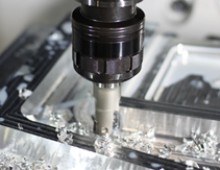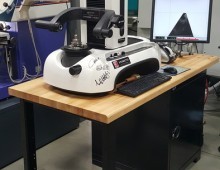Answering the Most Important Questions for First-Time Presetter Buyers: Part 1
Purchasing an offline tool presetter for the first time can be daunting. There’s of course the financial investment, the ensuing process adjustment and the general discomfort and uncertainty of change; everybody’s heard this one, right, “It’s just the way things have always been done.”
With this two-part post, we hope to put your mind at ease. By the end of Part 2, you’ll know everything you need to think about before drawing up a purchase order for your first presetter.
Why offline tool presetting?
Offline tool presetting saves money and time, makes managing data easier and reduces the chances of human error…here’s how.
Verifying tool geometries and cutting surfaces increases the chances of getting the first cut right, saving on scrap and ensuring tools won’t be damaged on a misfit cut. Replacing in-spindle setup with a presetter keeps your machine tool cutting and generating revenue. Plus, a presetter with built-in USB and printer ports, which are often standard these days, makes data management much more efficient with error-free transfer and storage of spindle, job, and tool and component data.
Not to mention, being able to use your presetter for both rotating (MC’s) and stationary tooling (Lathes) means you can multiply the value.
What type of shops get the most from tool presetting?
If you said “shops with a concentration on prototyping,” or “those with the most machine tools,” or “moldmakers,” sorry to say, but you’re wrong. The honest truth is shops of all shapes, sizes and specialties can benefit from offline tool presetting.
Medical manufacturers rely on them for micromachining precision, automotive part makers need them for the sake of consistency since production runs require duplicate tooling setups, and in aerospace, well, there’s simply no room for error…the list goes on.
Speroni’s tool preparation list module allows you to easily and seamlessly prepare your tools for the next job – whether it is a new setup or a legacy setup from months or maybe even years ago.
It’s a myth that only metalworking operations with the highest volumes benefit. Even if you have just a handful of machine tools, the investment will pay long-term dividends. Heck, if your shop has only one machine tool…that spindle time is extremely valuable, right?
How do I justify the upfront cost?
Whether you have five machine tools or 50, any purchase needs to be justified. There’s a fairly simple formula calculating just how quickly your new presetter will pay for itself. And it will, regardless of which of those categories you fit in to.
# of machines presetter will support
x
average # of hours per shift on each machine setting tool lengths and diameters
x
# of shifts per day
x
spindle value per hour
/
price of the presetter
The total of this equation will show you the approximate number of days it will take for your first presetter to pay for itself. Everything after that is added value.
See for yourself – plug in your numbers here.
Now that you’re thoroughly convinced buying a presetter is the right move, be sure to come back and read Part 2. It will explore some of the important questions to ask to make sure you select the right tool presetting system for the work your shop does today, and will do tomorrow.
Part 2 of this post discusses selecting the right presetter for you and your shop. Click here to read it.


















¿Te pareció interesante o útil? Haznos saber tu opinión agregando tus comentarios o preguntas a continuación.